
On Black Friday, I led a glorious excursion to Santiago
Peak. At roughly 5687 feet, it is
the highest point in the Santa Ana Mountains. The 4 of us, still puffy-eyed and bloated from the excesses
of Thanksgiving, met at the Rose Canyon Cantina parking lot at 7AM. Oliver, Mark, and I loaded into Kurt's
high-clearance vehicle and drove up Trabuco Creek Road (a rough dirt road with
multiple creek crossings) to the Holy Jim trailhead. It was a cold and drizzly day — perfect weather for a
16-mile hike with 4000 feet of elevation gain. Such a journey, would take about 9 hours with frequent stops
to catch our breath and appreciate the scenic splendor.
]
After paralleling Holy Jim Creek for about a mile, we left
the riparian woodland and popped into the chaparral.
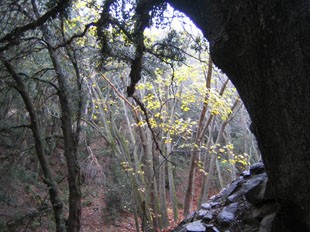
Eventually, we found ourselves in a cavernous “canyon live
oak” woodland interspersed with big-cone Douglas-firs, bigleaf maples, bay
laurels, and sword ferns.
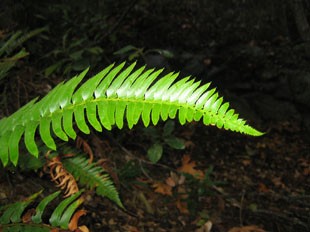
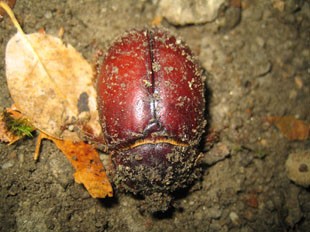
I noticed a
hefty one with a perfect split down the middle, but it seemed to creep slowly
across the path as I approached.
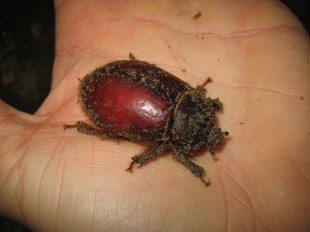
This had to be the
biggest beetle I had ever seen in Southern California.
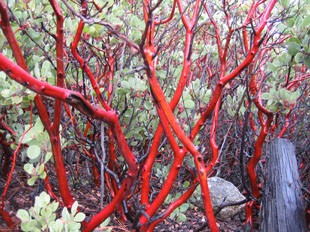
We left Bear Springs after our short lunch break and made
the challenging trek to the peak.
Along the way, we enjoyed the “sweet tart” taste of ripe manzanita
berries. We froze our butts off at
the top and then headed back down before nightfall. No other beetles were observed that day. We parted ways with the beetles fresh
in our minds. Using photos from
our trip as a reference, Kurt and I investigated the beetles and arrived at the
same conclusion. It turned out
that our hike coincided with a rarely seen emergence of rain beetles (Pleocoma
sp.).
Excerpts of rain beetle life history from “Wayne's Word –
Beetles” (http://waynesword.palomar.edu/ww0502.htm):
“…appear with the first soaking rain during late fall in
coastal San Diego County and adjacent Baja California. They belong to the genus
Pleocoma and are commonly referred to as rain beetles. The name Pleocoma is
derived from two Greek roots, “pleos” (full or abundant) and
“kome” (hair). The name translates into “very hairy,” which
describes these beetles perfectly, particularly their underside. Rain beetles
are typically found in coastal foothills and canyons of chaparral and coastal
sage scrub. After a soaking rain (usually one or more inches), male beetles
make a sudden appearance at dusk, early morning, or on cloudy, drizzly days.
The males fly in slow sweeping arcs throughout the foothills, keeping close to
the ground in search of the larger, flightless females.
The larger, more rotund, flightless female rain beetle
rarely leaves her burrow in the ground. She emits a pheromone that is
apparently irresistible to the male, as she waits for him at the surface of her
burrow. After mating, the female closes the entrance and lays eggs at the base
of her burrow. Both sexes of
Pleocoma lack functional mouthparts and digestive tracts, and consequently do
not feed during their brief adult life. With her powerful legs and clypeus, the
female pushes and scoops the soil like a miniature bulldozer. Her eggs do not
mature until the following spring or early summer.
Rain beetle larvae hatch from eggs deep in their mother's
subterranean burrow. They are slow to develop, and have a life cycle lasting
ten years or more…”

